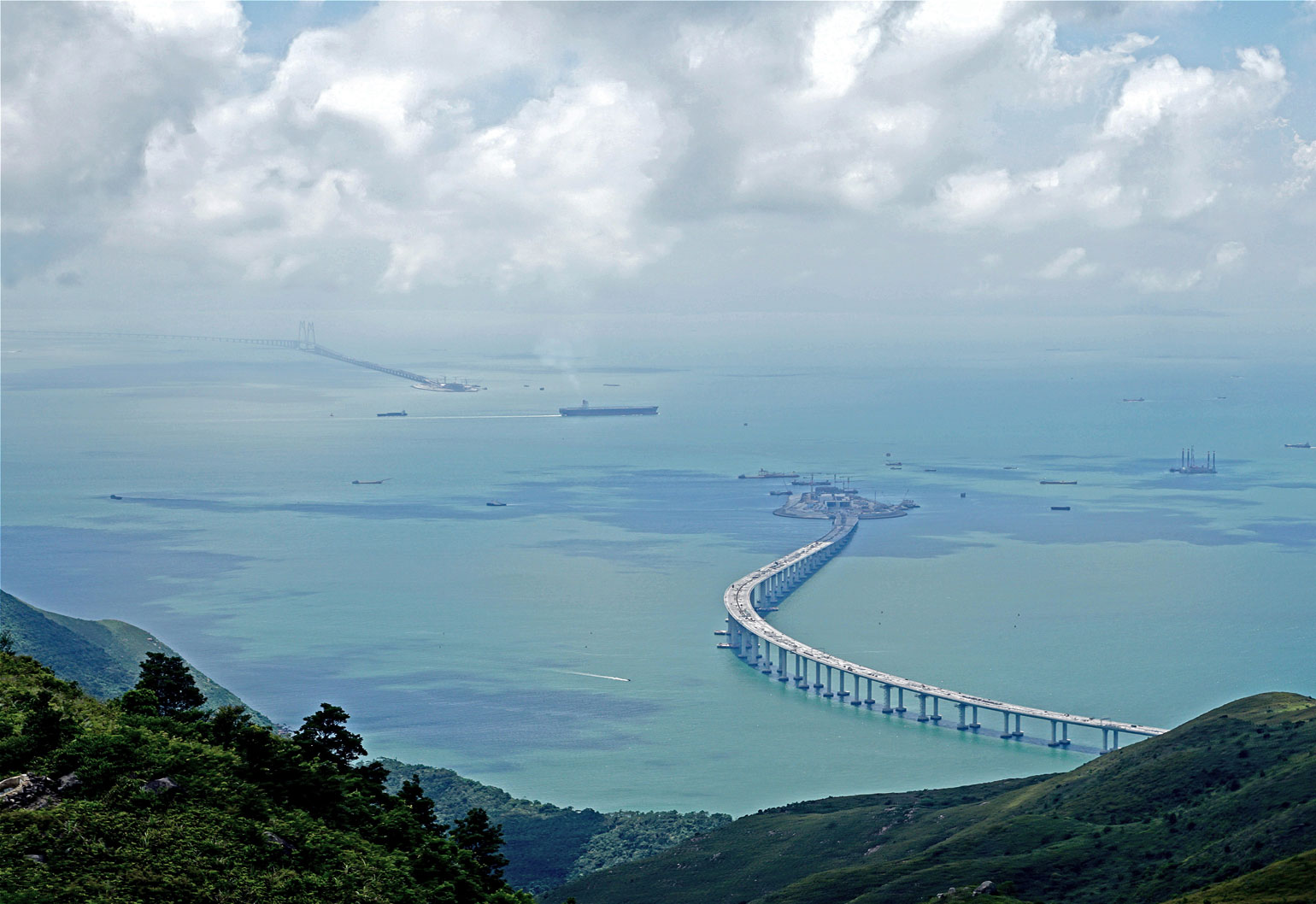The world’s longest sea bridge, opened this week in China, includes a 6.7 km underwater tunnel, two artificial islands – and took more than 14,000 people to build.
China’s infrastructure ambitions keep hitting new highs, as this week the country opened the world’s longest sea bridge to traffic.
Eight years and more than $20 billion later, the first cars crossed the 55 kilometre bridge connecting Hong Kong, Macau and the mainland Chinese city of Zhuhai in Guangdong Province yesterday.

It’s predicted 60 million people in the area can now take advantage of reduced travel times between the three hubs, bringing economic development opportunities to the region.
“The bridge will act like a ringroad for the Pearl River Delta area. It will not only speed up transport – it will also help spread Hong Kong’s development to the cities on the mainland side,” said Yu Lie, the deputy director of Hong Kong-Zhuhai-Macao Bridge Authority, earlier this year.
“At the peak of construction, there were about 14,000 workers building this bridge and 300 ships. It was an extraordinary construction site,” Yu said.
Engineering challenges
The engineering team had many competing factors to balance.
The majority of the bridge is over water, and the soft and sometimes quite deep seabed posed unique challenges. Steel cylinders had to be driven into the seabed to support the bridge’s foundation and two artificial islands that connect the undersea portion. Each island took seven months to construct, which involved placing 120, 22-metre-by-50-metre steel cylinders into the sea bed “so the islands could be firmly rooted”, according to one of the designers.
It’s also in a high-traffic area, which placed restrictions on the bridge’s design. Height limitations were imposed as the bridge runs directly under the flight path into Hong Kong International Airport.
By sea, cargo ships needed passage in and out of China’s busy ports, which resulted in a 6.7 kilometre long section of undersea tunnel to allow for shipping corridors. At its deepest, the tunnel is 46 metres under water.
Local conditions were another consideration. The bridge was specially designed to withstand the earthquakes and typhoons that frequent this region of the Pearl River Delta.
World’s longest sea bridge: Hong Kong-Zhuhai-Macao Bridge is ready for launch pic.twitter.com/Ditk9pz9IA
— China Xinhua News (@XHNews) October 22, 2018
Construction was not free from controversy, however. Opening was initially scheduled for 2016, but a series of delays, corruption scandals and cost blowouts pushed the timeline by two years. The structure also became known locally as the ‘bridge of death’ after at least 10 workers died during construction and another 600 were reported injured.
Dredging the seafloor to construct the support beams and undersea tunnel raised environmental concerns as well. The area is home to the endangered Chinese white dolphin, and the Dolphin Conservation Society reported that construction has led to a 40 per cent decline in the species.
Forging links
The mega bridge was built to stand for 120 years, and according to local authorities, there are plans in place for ongoing monitoring and maintenance, especially as more people traverse it over time.
“Similar to many other infrastructures, the utilisation rate of the bridge will increase gradually given more time and experience,” said Secretary for Transport and Housing Frank Chan Fan during a press conference last week.
“The government will closely monitor the utilisation rate … and actively explore measures in conjunction with our counterparts with a view to optimising the utilisation and benefits.”
This project sets a record for sea bridges, though it falls short of the world’s longest bridge – a 164 kilometre section of the high speed rail connecting Shanghai to Nanjing.
Projections put traffic at 29,100 vehicles and 126,000 passengers a day by 2030. Looking ahead, Chan said this bridge will facilitate other projects in the area, such as an aerotropolis.
“We will progressively take forward the topside development, as well as the airport and aviation-related businesses, so as to create synergy with the operation and development of the Hong Kong International Airport,” Chan said.
“The mission to construct the bridge has been accomplished. Our next mission is to make the best use of the topside development at the artificial island and to capitalise on the strategic advantage of the bridge.”
